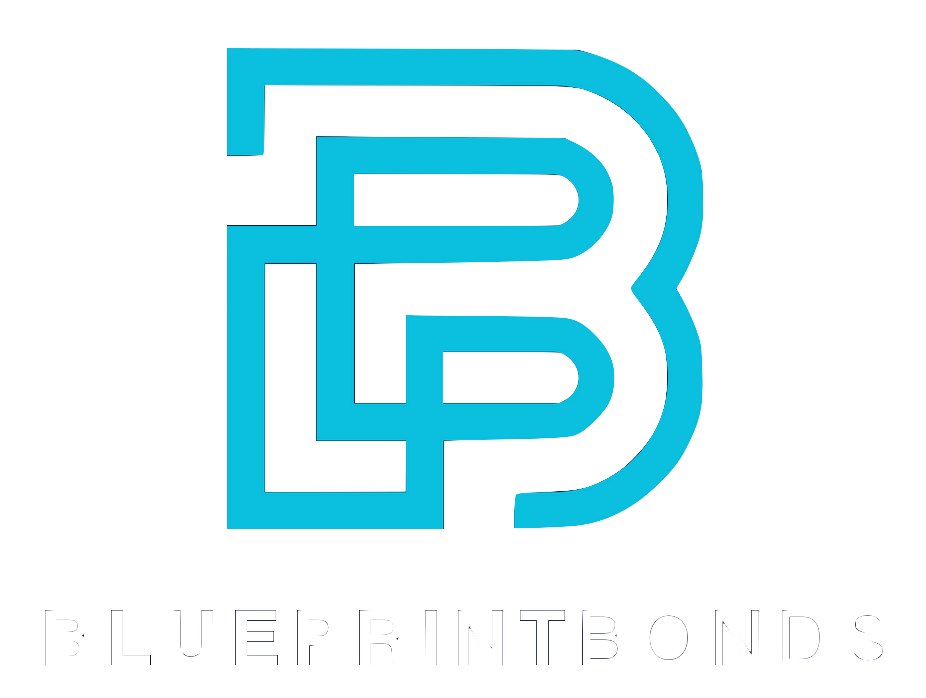Request for Proposal (RFP) templates are essential tools for organizations aiming to attract the right vendors and secure the best solutions. However, crafting an effective RFP template that resonates with vendors and aligns with project goals can be challenging. This article dives into proven strategies and ready-to-use language that RFP template owners can confidently copy and paste, ensuring clarity, consistency, and higher success rates in procurement processes.
Recent studies highlight the power of personalization in proposals, showing a 47% increase in win rates when templates are tailored effectively. Leveraging such insights can transform your RFPs from generic documents into compelling invitations that vendors are eager to respond to. For those interested in the data behind these improvements, the analysis of 2,500 business proposals offers a detailed look into how AI-driven personalization is reshaping proposal performance here.
Why Customization Matters in RFP Templates
Customization isn’t just a buzzword in procurement; it’s a strategic necessity. Templates that align directly with specific project goals tend to receive more focused and relevant responses from vendors. This alignment helps vendors understand exactly what is expected, reducing ambiguity and improving the quality of proposals.
Industry reports emphasize that customized RFPs outperform generic ones because they communicate project priorities clearly, which in turn encourages vendors to tailor their solutions accordingly. This targeted approach not only saves time during evaluation but also fosters better vendor relationships by demonstrating professionalism and clarity from the outset. For a deeper understanding of these best practices, one can explore expert insights on RFP template customization here.
Key Elements to Customize in Your RFP Template
When tailoring your RFP template, focus on the following components:
- Project Overview: Provide a detailed summary that outlines the scope, objectives, and expected outcomes.
- Evaluation Criteria: Clearly define how proposals will be assessed to ensure transparency and fairness.
- Technical Requirements: Specify any mandatory technical standards or certifications needed.
Timeline and Milestones: Include realistic deadlines to help vendors plan their responses effectively.
Including these elements in a way that reflects the unique needs of your project helps vendors craft proposals that are both relevant and competitive. Furthermore, the inclusion of specific examples or case studies in your RFP can significantly enhance understanding. By illustrating past projects that align with your current needs, you provide vendors with a tangible reference point that can inform their proposals and foster innovative solutions tailored to your requirements.
Another crucial aspect of customization is the incorporation of feedback mechanisms within the RFP process. By inviting vendors to ask questions or seek clarifications, you not only enhance engagement but also ensure that the proposals you receive are as aligned with your expectations as possible. This two-way communication can lead to more refined and thoughtful responses, ultimately benefiting both parties and paving the way for a successful partnership.
Structuring RFP Templates for Maximum Clarity
One of the biggest challenges in RFP creation is ensuring that vendors fully understand what is being requested. A well-structured template minimizes confusion and encourages comprehensive, focused proposals.
Experts recommend including a detailed overview section in every RFP template. This section should explain the project’s background, goals, and any critical constraints. Such clarity helps vendors align their proposals with your expectations from the start. Responsive.io highlights how this approach leads to more effective proposals by setting clear context and reducing guesswork here.
Sample Language for Project Overview
“The purpose of this project is to implement a scalable solution that enhances data security across our enterprise network. Vendors are expected to propose solutions that comply with industry standards and integrate seamlessly with existing infrastructure. The project timeline spans six months, with key milestones outlined in Section 4.”
Sample Language for Evaluation Criteria
“Proposals will be evaluated based on the following weighted criteria: technical capability (40%), cost-effectiveness (30%), vendor experience and references (20%), and implementation timeline (10%). Vendors should provide detailed documentation supporting each criterion.”
In addition to the overview and evaluation criteria, it is beneficial to include a section on the submission process. This should detail how and when proposals should be submitted, any required formats, and the contact information for questions. Clear instructions can prevent last-minute confusion and ensure that all proposals are submitted in a consistent manner, facilitating a smoother review process. For instance, specifying that proposals must be submitted electronically by a certain deadline can help streamline the evaluation phase and keep the project on track.
Furthermore, consider adding a FAQ section to address common queries that may arise during the proposal preparation phase. This proactive approach can save time for both vendors and your team, as it allows for the clarification of expectations and requirements upfront. By anticipating potential questions and providing thorough answers, you not only enhance the quality of the proposals received but also foster a more collaborative relationship with potential vendors, setting the stage for a successful partnership.
Leveraging AI and BPMN for Enhanced RFP Effectiveness
Modern procurement processes are increasingly adopting AI-driven methods to tailor proposals and streamline evaluation. While AI can significantly improve personalization and efficiency, the quality and accuracy of the data fed into these systems remain critical. Poor data can lead to suboptimal recommendations and missed opportunities. For instance, organizations that neglect data hygiene may find themselves relying on outdated or incorrect information, which can skew decision-making and ultimately affect the success of their procurement efforts.
A recent analysis of AI-driven proposal template performance underscores the importance of combining human expertise with intelligent automation to maximize benefits. Organizations that invest in refining their data inputs and continuously updating their templates see better outcomes and higher win rates read more. Moreover, the integration of AI can facilitate predictive analytics, allowing organizations to anticipate market trends and adjust their proposals accordingly, thus enhancing their competitive edge.
Using BPMN Diagrams to Clarify Requirements
Business Process Model and Notation (BPMN) diagrams offer a visual way to represent workflows and requirements, making complex processes easier to understand. A case study focusing on Public Key Infrastructure RFPs demonstrated that BPMN diagrams provide clearer requirement definitions than traditional text-based documents. This clarity helps vendors better grasp the scope and reduces back-and-forth clarifications during the proposal phase. Furthermore, BPMN diagrams can serve as a common language between stakeholders, bridging gaps between technical and non-technical team members, which is often a challenge in procurement processes.
Including BPMN diagrams or similar visual aids in your RFP templates can be a game-changer, especially for technical projects with intricate workflows. These diagrams not only enhance communication but also facilitate better alignment of expectations among all parties involved. By visually mapping out the processes, organizations can identify potential bottlenecks and areas for improvement early in the procurement cycle. More details on this approach can be found in the relevant case study here. As organizations continue to embrace digital transformation, the adoption of BPMN alongside AI technologies will likely become a standard practice, driving efficiency and clarity in RFP processes.
Ensuring Consistent Evaluation and Fair Decision-Making
Inconsistent evaluation standards can undermine the entire RFP process. When evaluators rely on gut feelings rather than clearly defined criteria, the risk of biased or suboptimal decisions increases. Establishing consistent evaluation frameworks within your RFP template helps mitigate this risk. A well-structured evaluation process not only enhances the credibility of the selection but also fosters trust among stakeholders, ensuring that all parties feel their proposals are being assessed fairly and objectively.
Experts stress the importance of standardized scoring guides and detailed instructions for evaluators. This approach promotes transparency and fairness, ensuring that every proposal is judged against the same benchmarks. By implementing a uniform scoring system, organizations can better compare proposals side by side, making it easier to identify the most suitable candidates. For further insights on maintaining evaluation consistency, see the expert commentary on RFP evaluation standards here.
Sample Language for Evaluation Instructions
“Each proposal will be independently scored by the evaluation committee using the attached scoring rubric. Evaluators must document their rationale for each score to ensure transparency. Any conflicts of interest should be disclosed immediately.”
Additionally, it is beneficial to hold a calibration session prior to the evaluation process. During this session, evaluators can discuss the scoring rubric in detail and align their understanding of the criteria. This collaborative approach not only helps to unify the evaluators' perspectives but also allows them to address any ambiguities in the evaluation criteria before the actual scoring begins. Furthermore, incorporating feedback loops where evaluators can revisit their scores after initial assessments can lead to more reflective and informed decision-making.
Building a Catalog of Reusable RFP Components
To streamline the RFP creation process, many organizations develop catalogs of reusable template components. Grouping sections such as standard terms, technical requirements, and evaluation criteria into modular blocks allows for quick assembly of tailored RFPs without starting from scratch each time. This practice not only enhances efficiency but also empowers teams to focus on the strategic aspects of procurement rather than getting bogged down in repetitive tasks.
This modular approach not only saves time but also ensures consistency across different RFPs, which is crucial for maintaining quality and professionalism. Responsive.io highlights how such catalogs can transform procurement workflows by balancing efficiency with customization explore more. Furthermore, by utilizing a catalog, organizations can easily update and refine components based on feedback and changing market conditions, ensuring that their RFPs remain relevant and competitive.
Example Modular Components
- Standard Terms and Conditions: Legal and compliance language applicable across projects.
- Technical Specifications: Predefined requirements for common technologies or services.
- Proposal Submission Guidelines: Instructions on format, deadlines, and contact points.
In addition to these foundational components, organizations can also include sections that address specific industry standards or best practices. For instance, including a Risk Management Framework can help outline the expectations for identifying and mitigating potential risks associated with the project. Similarly, a Vendor Evaluation Matrix can provide a structured approach for assessing proposals against key performance indicators, ensuring that all submissions are evaluated fairly and comprehensively.
Moreover, incorporating feedback loops into the catalog development process can significantly enhance its effectiveness. By regularly soliciting input from stakeholders involved in the RFP process, organizations can identify gaps in their templates and make necessary adjustments. This continuous improvement cycle not only enriches the catalog but also fosters a culture of collaboration and innovation within the procurement team.
Conclusion: Empowering RFP Owners with Copy-Paste Confidence
Effective RFP templates are more than just documents—they are strategic tools that drive successful vendor engagements and project outcomes. By integrating personalized language, clear structure, AI-enhanced insights, and consistent evaluation frameworks, RFP owners can craft templates that deliver results.
Remember, the goal is to make your RFPs clear, relevant, and easy to respond to. With the sample language and best practices outlined here, template owners can confidently copy and paste sections into their documents, knowing they are backed by research and industry expertise. For those seeking to stay ahead in procurement innovation, understanding the impact of personalized proposals—such as their 30% higher likelihood of reaching decision-makers—can be a powerful motivator to refine your approach
learn more.




